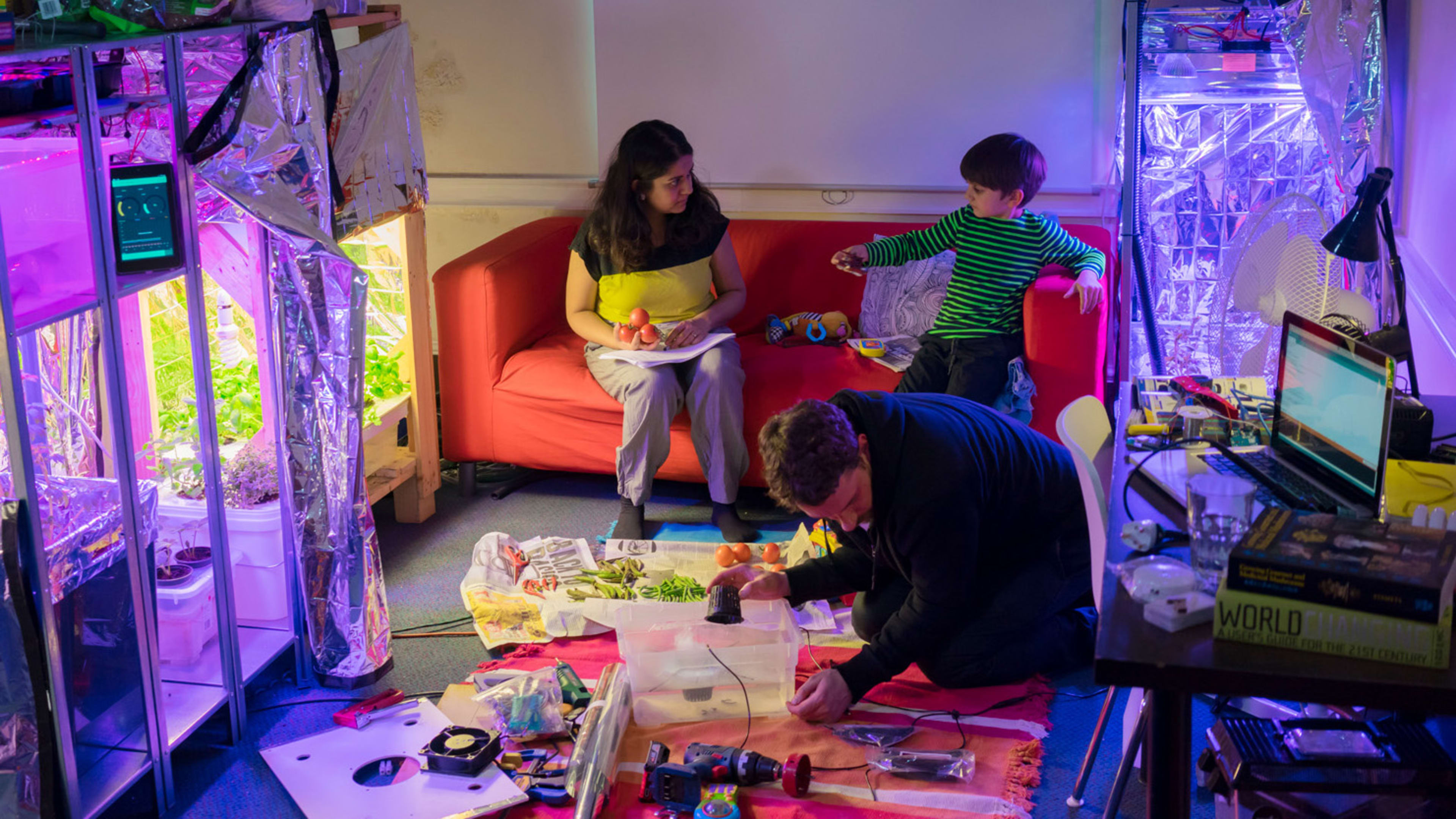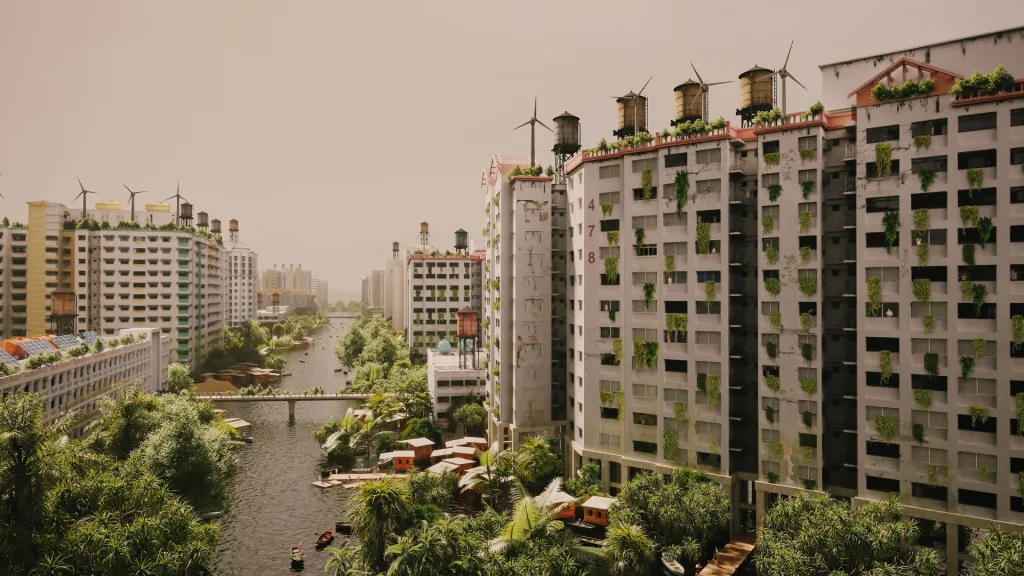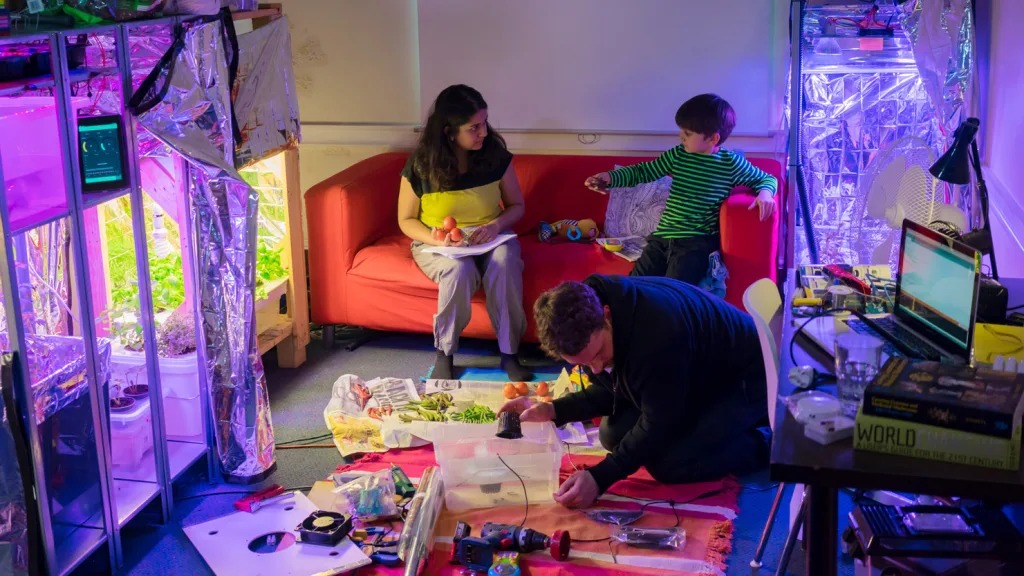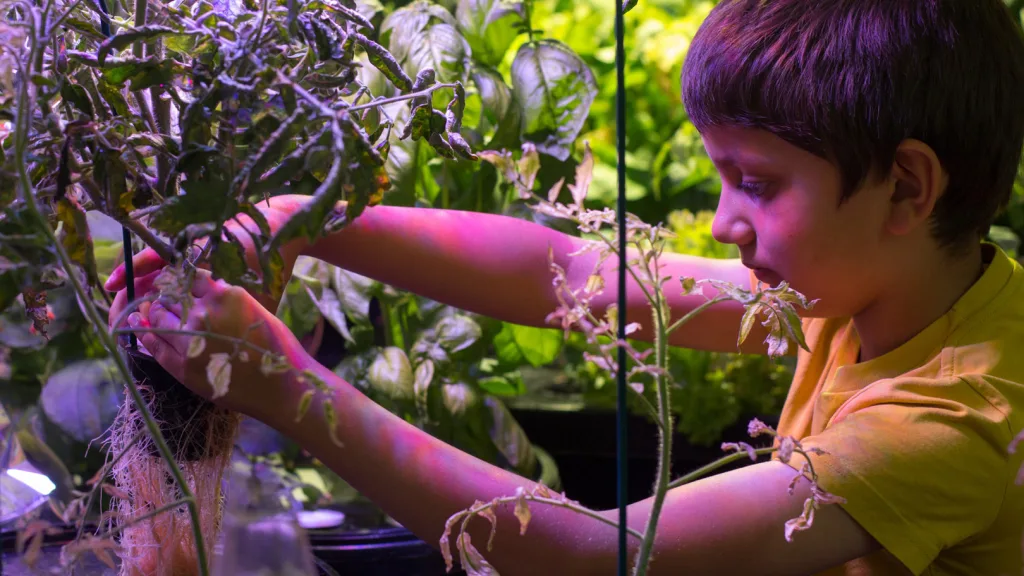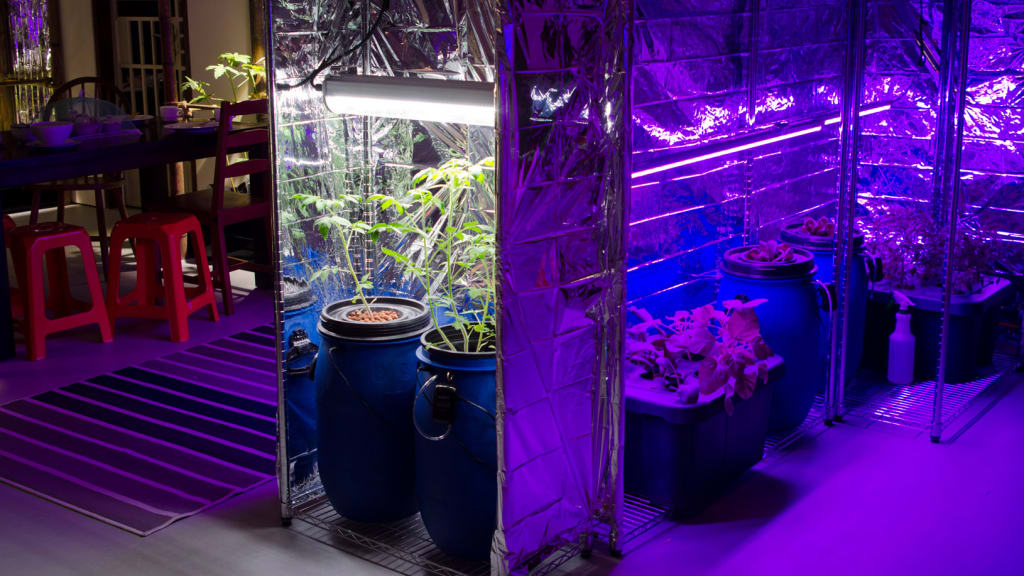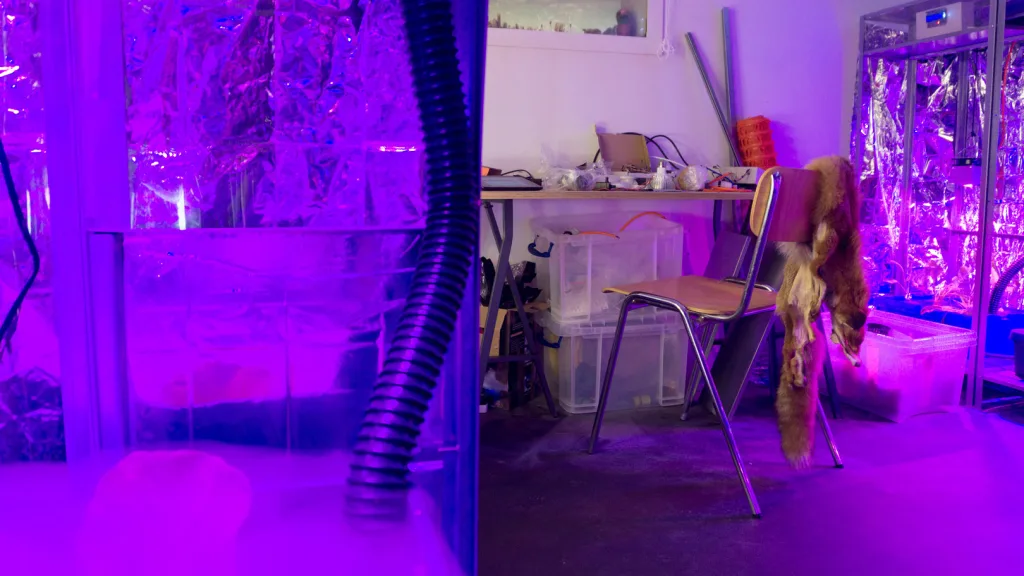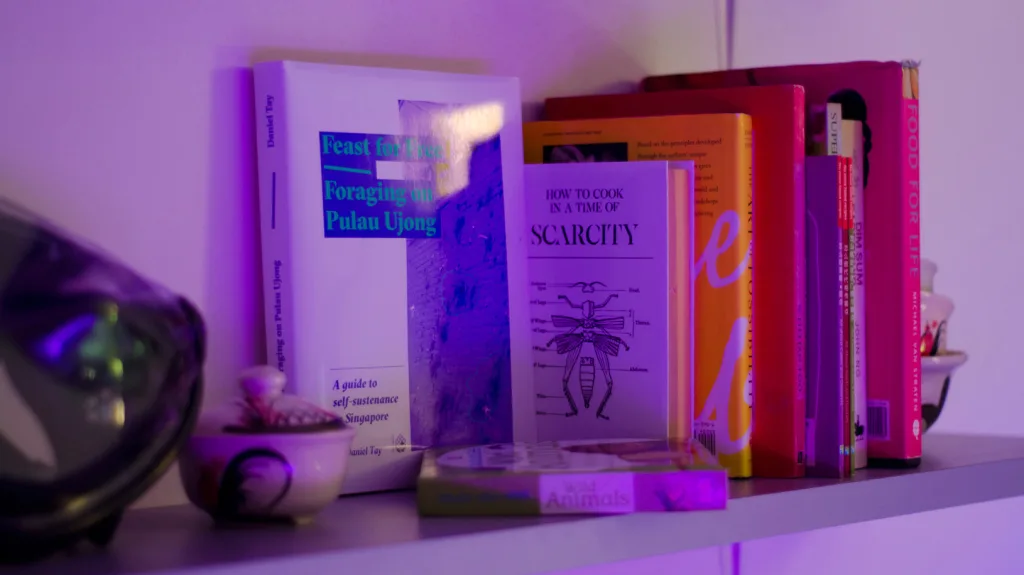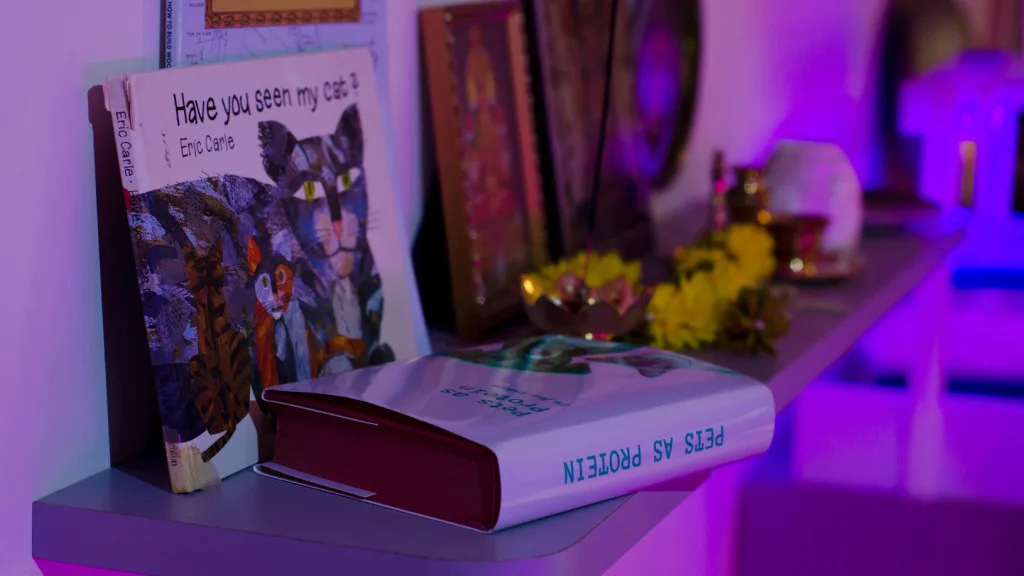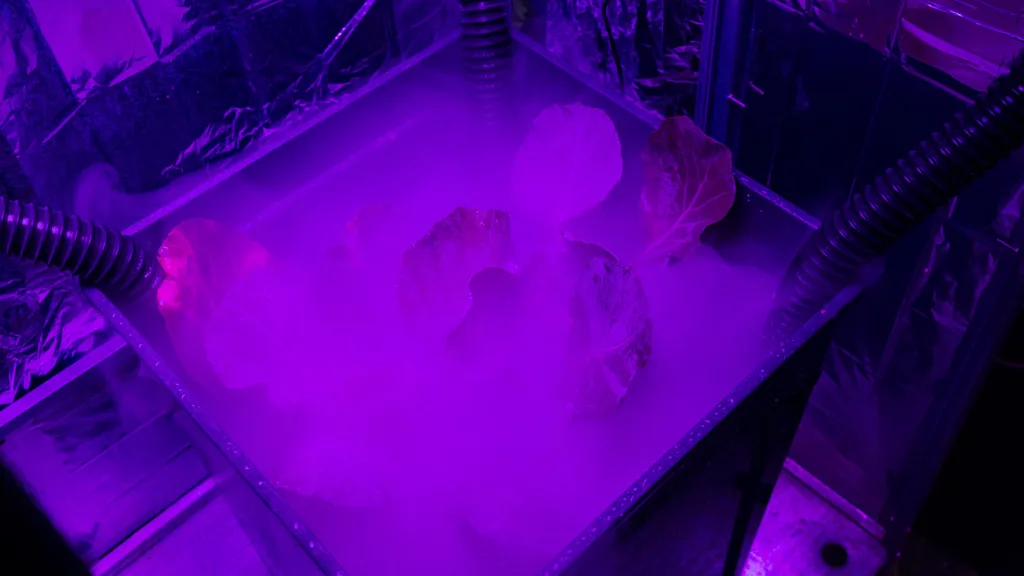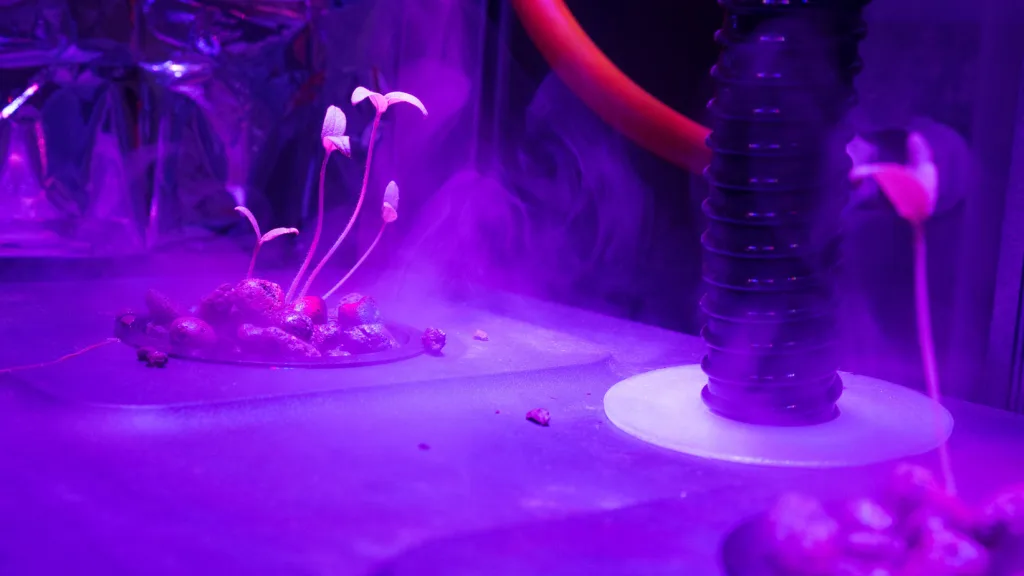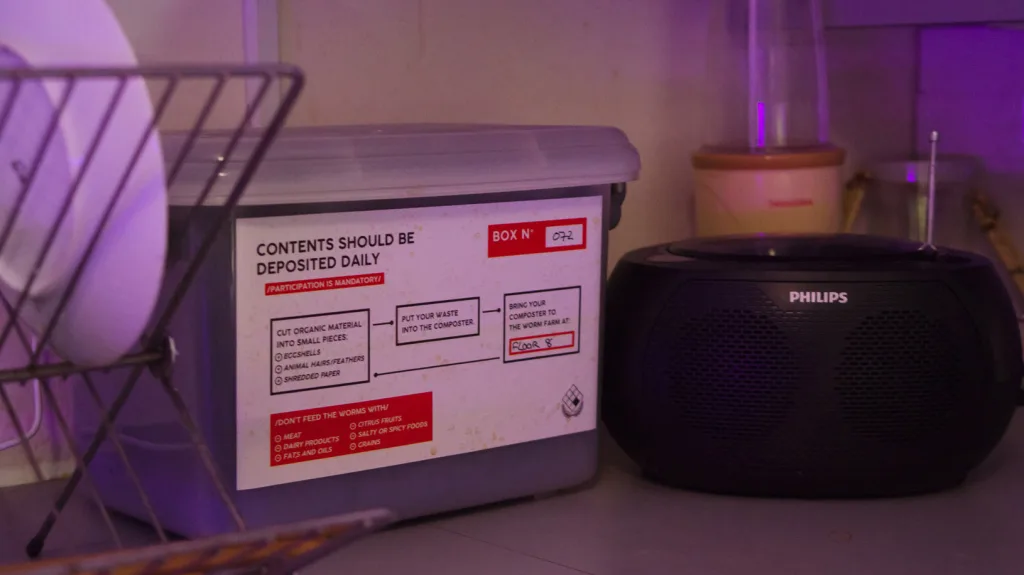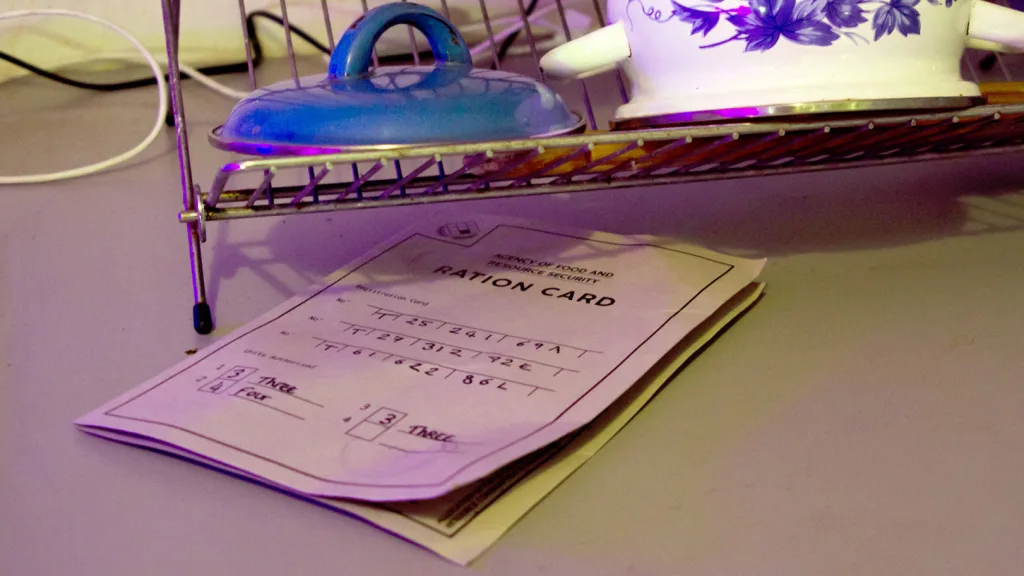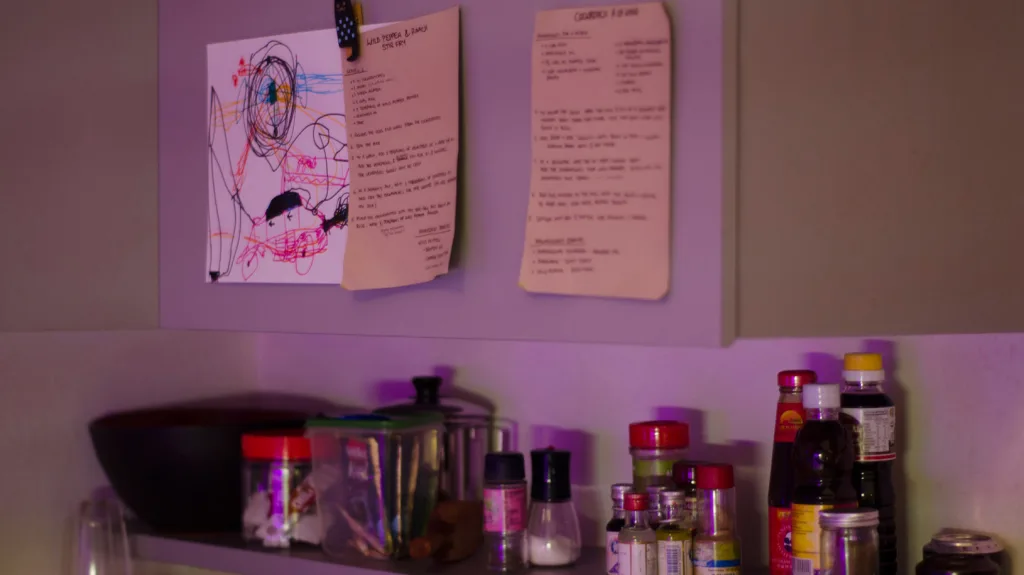Right now, visitors in Singapore have the chance to wander through a family’s apartment. The first thing they’ll see is a kayak resting against the exterior wall, and as guests enter the home, they’ll pass ponchos, snorkeling gear, and homemade fishing spears, the tips of which are fashioned from old circuit boards and held to a bamboo base with plastic strips.
Further inside, there’s a kitchen, that, though familiar at first glance, contains a few oddities: books entitled “Pets as Proteins” and “How to Cook in a Time of Scarcity,” ration cards on the counter, homemade burners made out of cans. The living area has been given over to food growing systems—fogponics structures and mealworm habitats—and through a window, a view of a flooded Singapore.
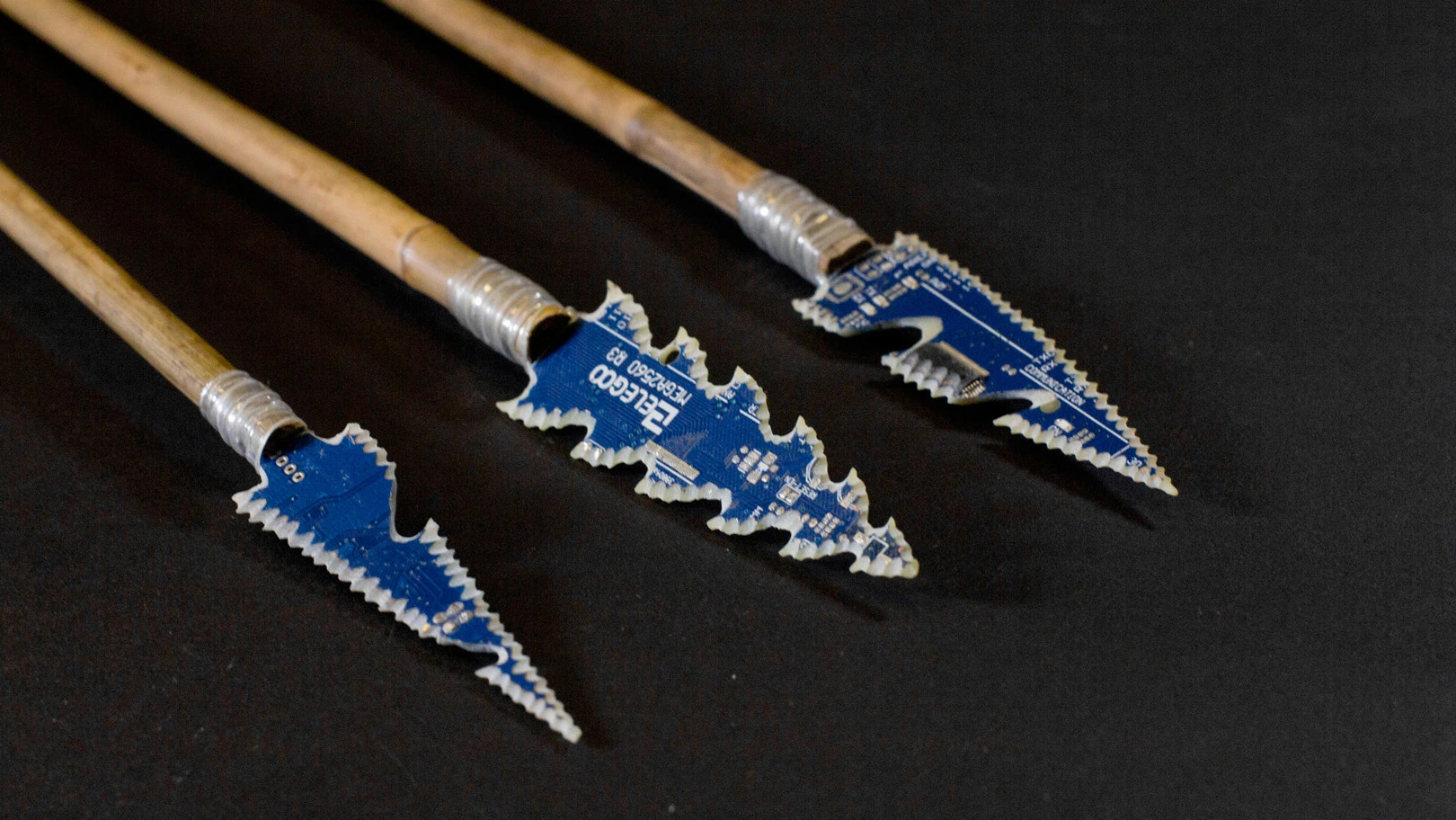
No one actually lives in this apartment, but it’s a glimpse into how humans might live in the second half of this century. Called “Mitigation of Shock, Singapore,” it’s an immersive installation by London-based design studio Superflux and part of the 2219: Futures Imagined exhibit at Singapore’s ArtScience Museum.
Superflux cofounders Anab Jain and Jon Ardern say they wanted to make climate change and its impacts feel more personal, and putting people in an apartment of a family making due with such hardships was one way to do it. “Not just thinking about big, global scale problems, but how does that impact day-to-day life?” Ardern says. “From our research, one of the big impacts is going to be on price and availability of food, so given that reality, we wanted to explore what might we sacrifice in our homes in order to make our access to food a little more robust.” Another detail in the kitchen: a piece of paper with a recipe for “wild pepper and roach stir fry.”
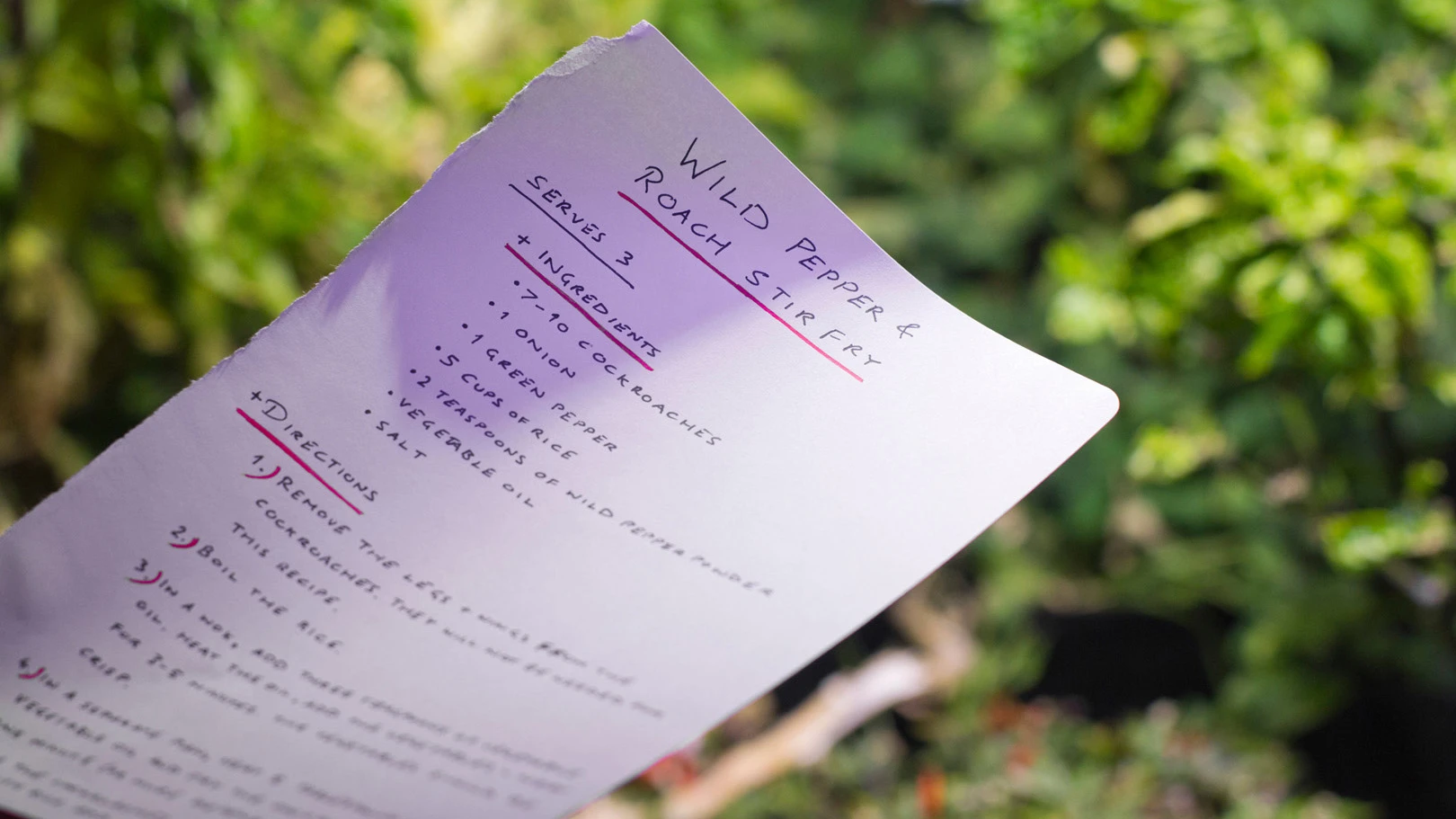
Jain and Ardern worked with experts like Benjamin Horton, chair of the Asian School of the Environment at Singapore’s Nanyang Technological University, to understand the ways climate change will affect food supply and the city of Singapore in general, and spent months perfecting the food growing system, which actually works (after much experimentation to ensure soil health and crop growth). They could have used props or plastic plants, but that trial and error, Ardern says, helped immerse them in the project and informed the entire installation.
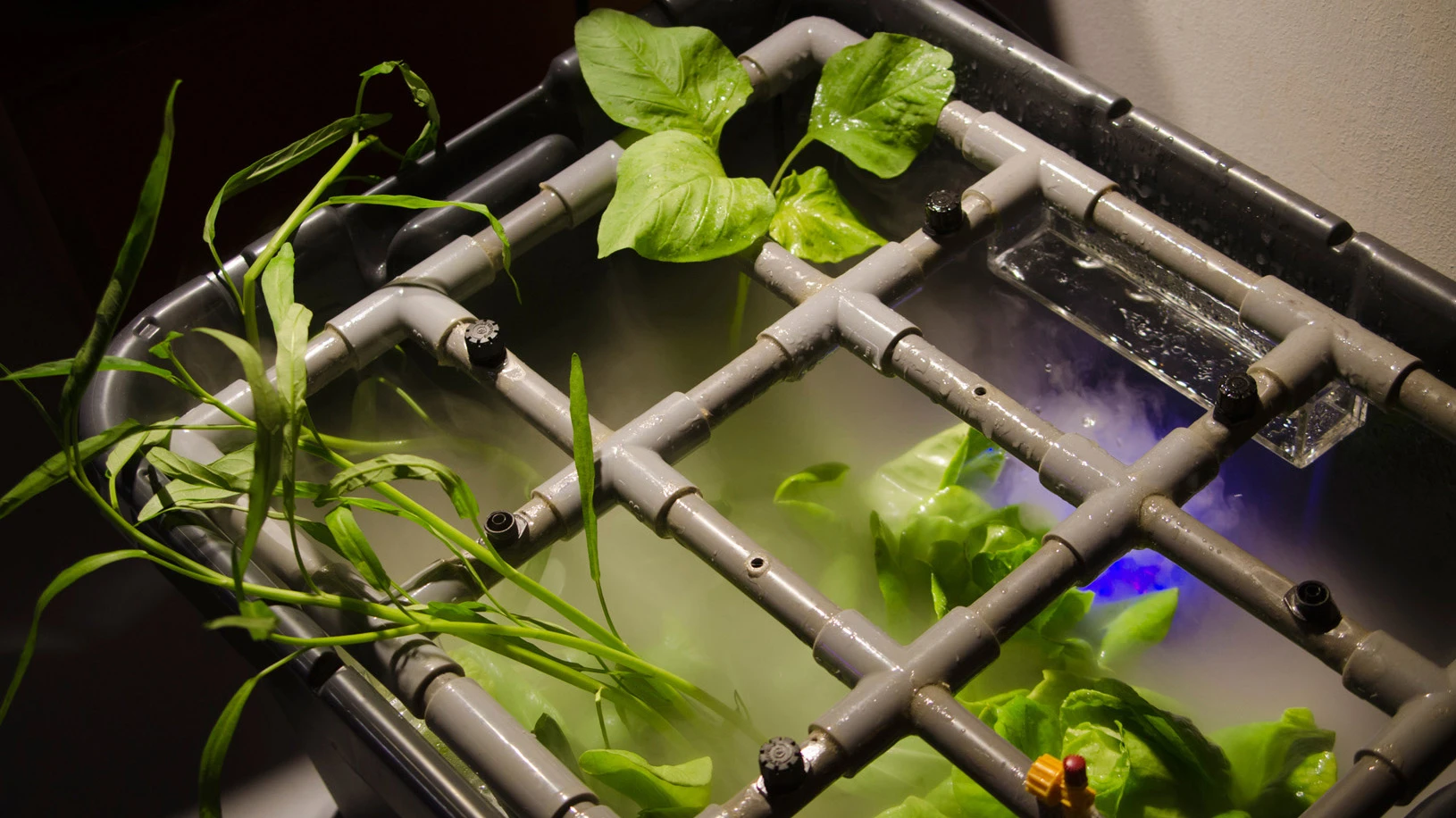
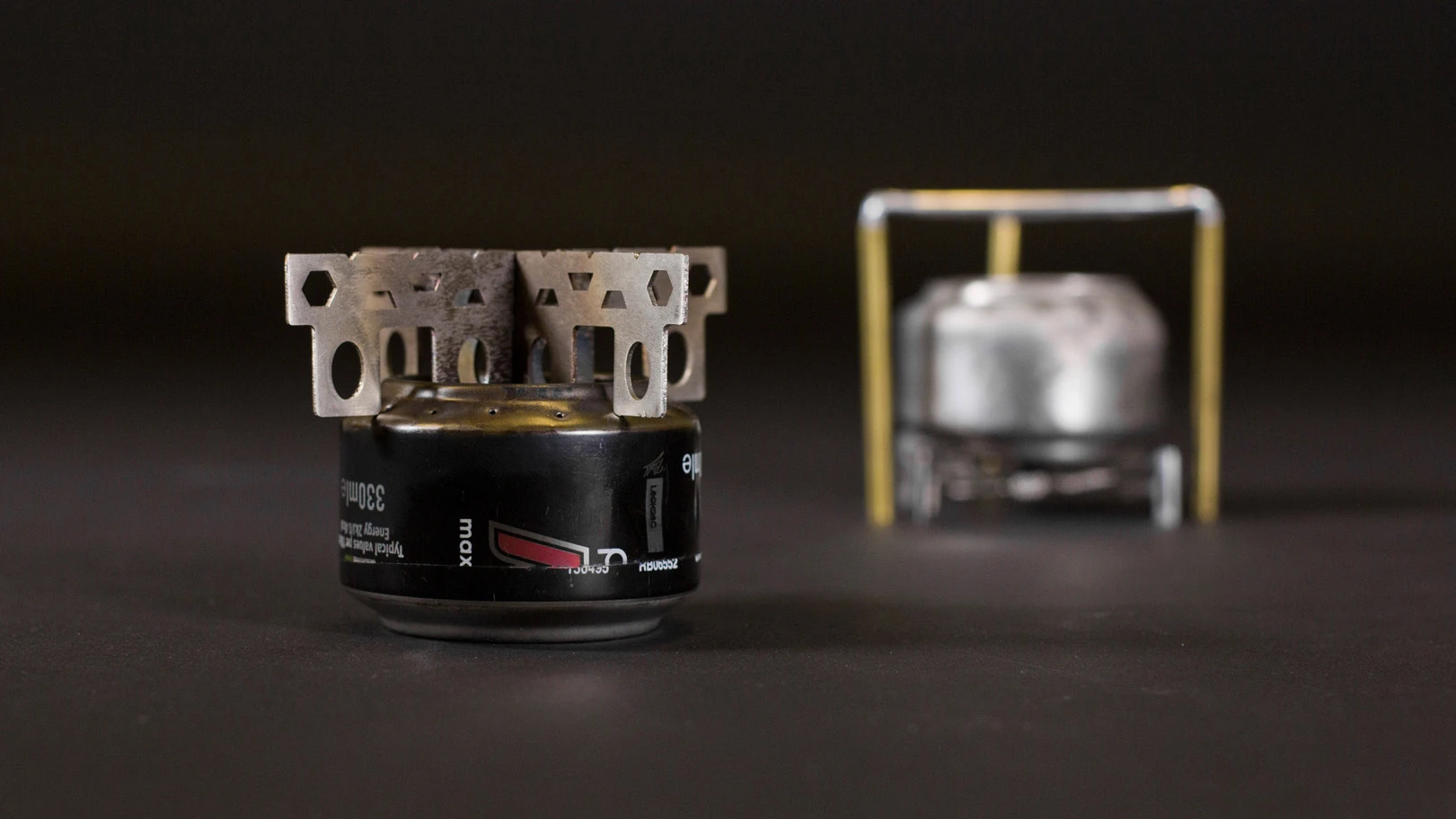
It isn’t meant to be apocalyptic, either. It may show the end of the world as we currently know it, and highlight the challenges that are certainly in store in the future, but the apartment is also a depiction of family life and perseverance. “We’re talking about multispecies cohabitation,” Jain says. “We’re talking about humility and deep resourcefulness and imagination.” Ardern notes that there are “drawings on the wall from a happy child,” though at least one is a drawing of “everyday life in a flooded city.” Still, it’s proof that generations have survived.
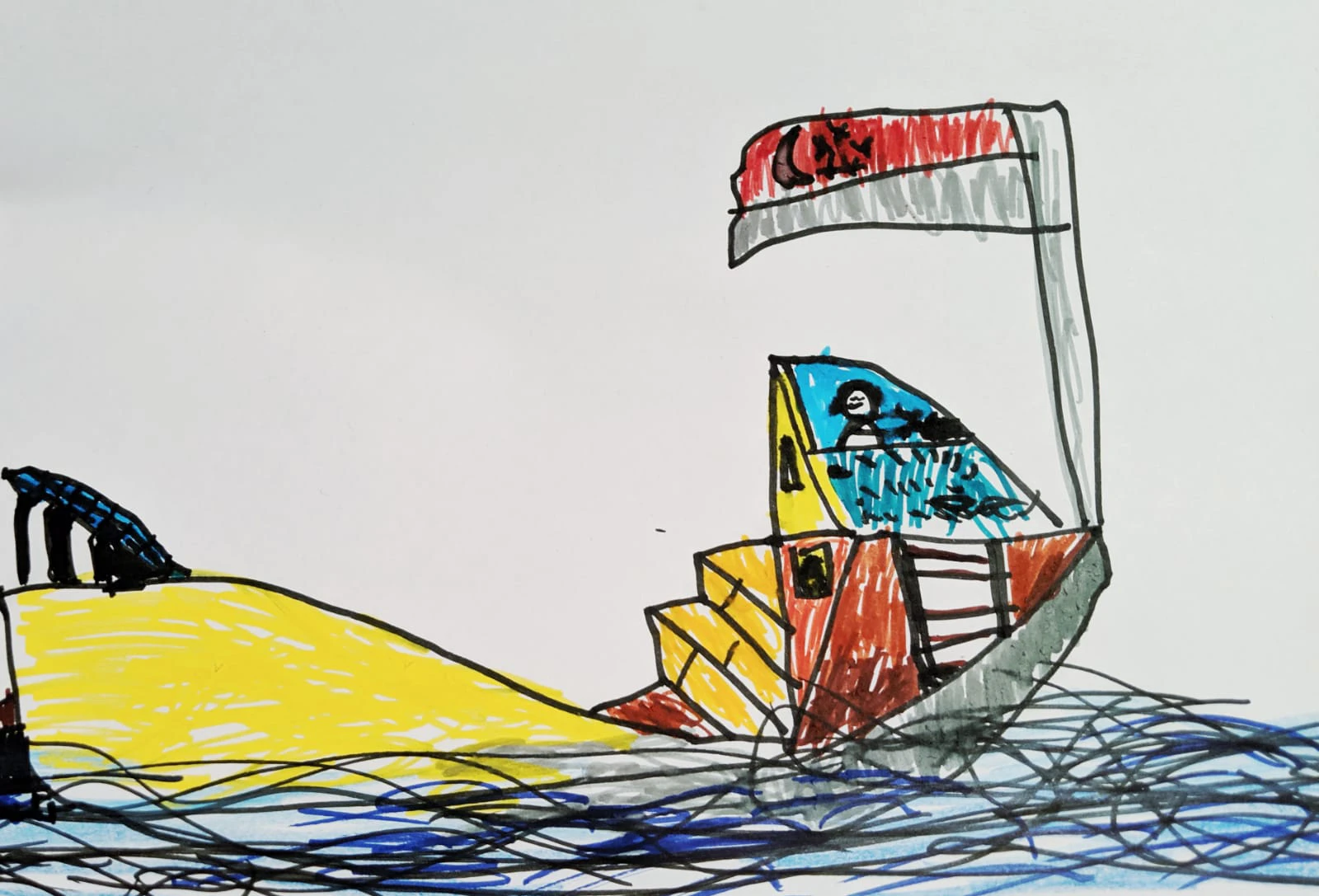
“Mitigation of Shock, Singapore” builds on a prior exhibit from Superflux called “Mitigation of Shock, London,” which depicted a London apartment adapted to climate change-ravaged 2050—only 30 years in the future (The Singapore instillation is set a bit further in the future, but Ardern and Jain prefer to keep the specific year ambiguous). Ardern and Jain picked the initial 2050 date because that’s when their son, currently 8 years old, will be around the age they are now. “That was an emotional lens for us when we were making it,” Ardern says. “Hopefully some of that hope and some of our desire for a better world is visible and readable within that space.”
Visitors have had mixed reactions to the instillation. At the London exhibit, people got angry and upset by the depiction, Jain says, even though they intended to present a hopeful vision of the future. Visitors to the Singapore exhibit, which opened in November and is on view until April 5, 2020, have said the opposite: it’s too optimistic and that things will actually be much worse. (Jain notes that the Australian bushfires began after the exhibit opened, and that catastrophic blazes, worsened by climate change, may have made this apartment’s version of the future seem downright utopian).
Ultimately, Jain and Ardern want to show that there is hope in how we will adapt to a changing world, and that even though we don’t know what the future will hold, there will be some familiarity, like that sense of home and family structure. And above all else, this immersive exhibit may help people realize that they need to acknowledge that climate change is happening. “We wanted people to situate their lives in that space and imagine what it might be to live [in the future],” says Ardern. “There’s an uncanniness to it, but it’s not completely unrelatable.”
Recognize your brand’s excellence by applying to this year’s Brands That Matter Awards before the early-rate deadline, May 3.
